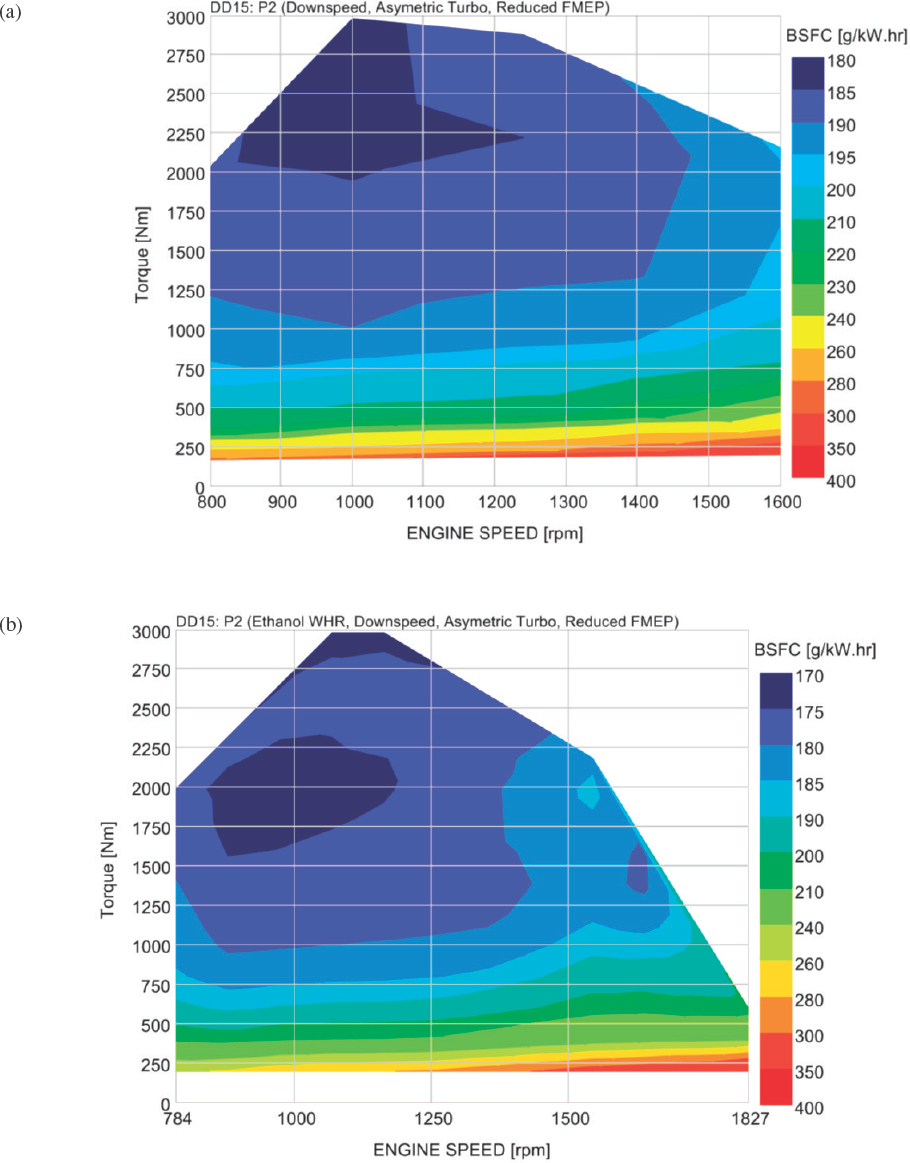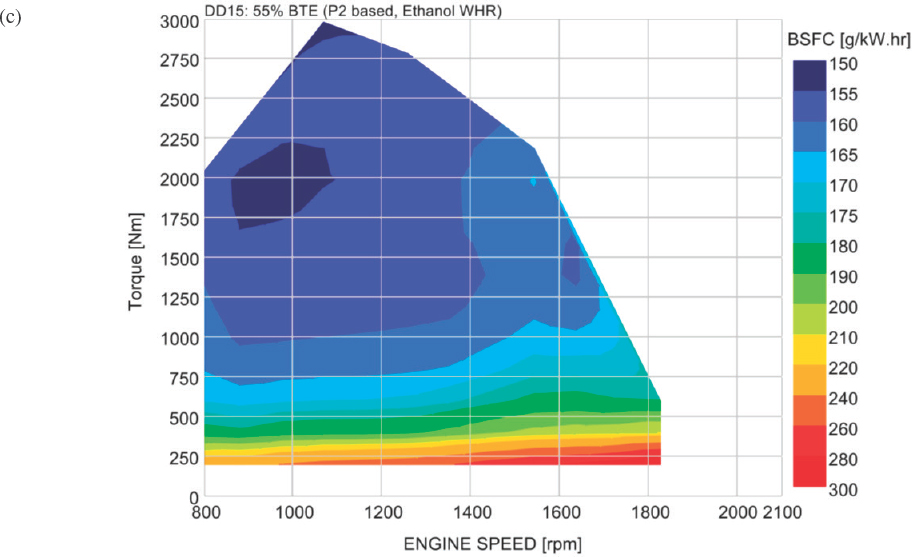D
Summary of Analysis of Engine and Vehicle Combinations
In 2015, Southwest Research Institute completed a project for the National Highway Traffic Safety Administration (NHTSA) that explored a range of vehicle technologies that could be used to comply with the proposed Phase II truck fuel economy and greenhouse gas emissions regulations. A National Research Council committee is looking at technologies that could become available beyond the Phase II time frame, so a project was created to use the models developed in the NHTSA project to explore technology potential farther into the future.
Four vehicle types were evaluated to cover the range of Class 2b through Class 8. The models include a Dodge Ram 2500/3500 pickup truck (Class 2b/3), a Ford F-650 tow truck (Class 5), a Kenworth T270 box delivery truck (Class 6), and a Kenworth T700 long-haul tractor-trailer truck (Class 8). The project was limited to looking at future engine technologies, so the baseline vehicle configurations were retained throughout the project. The following engine technologies were evaluated in the Class 2b through Class 6 vehicles:
- 2019 baseline 6.7 diesel engine, compliant with Phase I regulations
- A stoichiometric, spark-ignited (SI) natural gas engine with efficiency comparable to current production engines of this type
- A diesel engine with 48 percent brake thermal efficiency (BTE) at the best point
- A gasoline engine with 42 percent BTE at the best point
For the Class 8 tractor-trailer, the following engine technologies were evaluated:
- 2019 baseline 15 liter diesel engine, compliant with Phase I regulations
- A stoichiometric, SI natural gas engine with efficiency comparable to current production engines of this type
- A high-pressure direct-injection (HPDI) lean-burn, diesel pilot-ignited natural gas engine, based on the 2010 Westport 15 liter engine
- A diesel engine with waste-heat recovery and 55 percent BTE at the best point
- A gas turbine engine
The project evaluated vehicle fuel consumption with the engine alternatives, in terms of both gallons consumed and fuel mass consumed. Drive cycle average BTE has been determined for all engine alternatives, along with total energy consumption and CO2 emissions.
RESULTS:
The stoichiometric SI natural gas engines have by far the lowest thermal efficiency of all the engine options, but they still provide a 10 to 20 percent reduction in CO2 emissions compared to the 2019 diesel baseline. This CO2 reduction needs to be treated carefully, because the greenhouse gas advantage from reduced CO2 can easily be overwhelmed by tailpipe methane emissions and any leakage of natural gas fuel. The diesel pilot-ignited, lean-burn HPDI natural gas engine is almost as efficient as the 2019 diesel baseline. Given additional technical development, it should be possible to make this engine type competitive with the efficiency of future diesel technology. At the current (2010) level of development, the HPDI engine provides approximately a 22 percent CO2 reduction compared to the 2019 diesel baseline in the long-haul tractor-trailer truck. HPDI is substantially more complex and expensive than a stoichiometric, spark-ignited natural gas engine. In fact, HPDI technology was withdrawn from the market about the time oil prices started to drop, although development of a second generation of HPDI technology continues. The HPDI engine requires an expensive fuel system and the full diesel exhaust aftertreatment system (DOC + DPF + SCR),1 while the SI natural gas engine needs only a three-way catalyst for aftertreatment. The same caveats regarding methane leakage apply to the HPDI engine.
In the Class 2b through 6 trucks, the 48 percent BTE diesel engine provides fuel consumption and CO2 reductions of 10 to 12 percent across all vehicles and drive cycles, compared to the 2019 baseline. Compared to a Phase II compliant engine, this represents an additional 6 to 8 percent fuel and CO2 savings. The performance of the 42 percent BTE gasoline engine in Class 2b through 6 trucks is more complex. In terms of energy consumption and CO2 emissions, the 42 percent BTE gasoline engine provides benefits ranging from 3 to 29 percent compared to the 2019 diesel baseline, depending on the payload and drive cycle. The gasoline engine performs best with zero payload on transient cycles with lower average power demand, but not so well on higher speed and load cycles. Because a gallon of gasoline has lower energy content than a gallon of diesel, the gasoline engine does not perform so well in terms of gallons consumed. The fuel consumption of the 42 percent BTE gasoline engine ranges from an 11 percent increase over the 2019 baseline diesel to an 18 percent reduction.
There are a couple of factors that influence the performance of the gasoline engine, beyond the thermal efficiency of the engine itself. The weight of the gasoline powertrain was estimated to be 500 pounds less than a diesel or natural gas powertrain. This weight difference reduces vehicle power demand by reducing rolling resistance and the power required to accelerate the vehicle. An additional, unexpected factor helping the gasoline engine is that, over most drive cycles, the driveline (transmission and axle) is more efficient for the gasoline engine. This effect is especially pronounced on lightly loaded, low-speed cycles. A careful review of the results showed that this effect is real, but the magnitude of the effect is highly dependent on details like torque converter match and transmission shift schedule.
In the long-haul Kenworth T700, the 55 percent BTE diesel provides 15 to 18 percent fuel savings and CO2 reduction, compared to the 2019 baseline diesel (see Figure D-1). These values will be about 4 percent smaller compared to a Phase II–compliant engine. This very large fuel savings shows the large potential benefit of the complex, high-risk technologies that will be required to achieve 55 percent BTE. The results for the SI and HPDI natural gas engines in the T700 have been described above.
___________________
1 DOC, diesel oxidation catalyst; DPF, diesel particulate filter; SCR, selective catalytic reduction.

SOURCE: Reinhart (2015).





